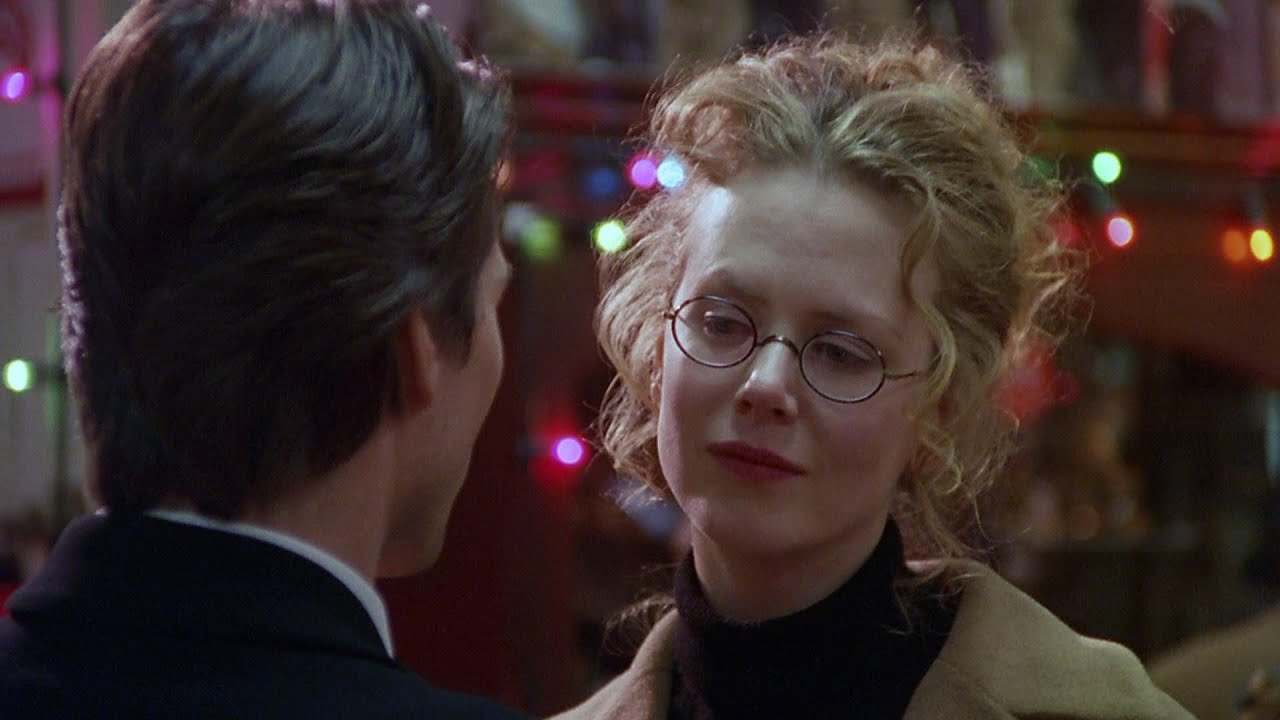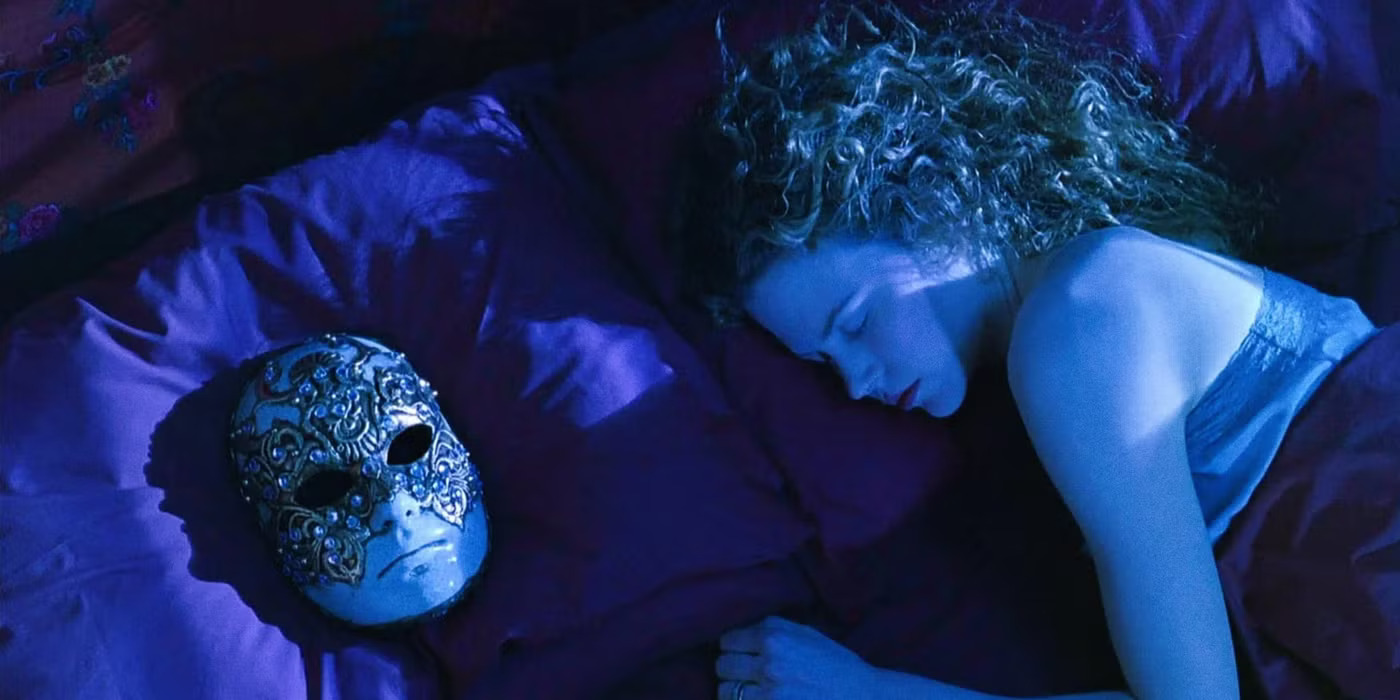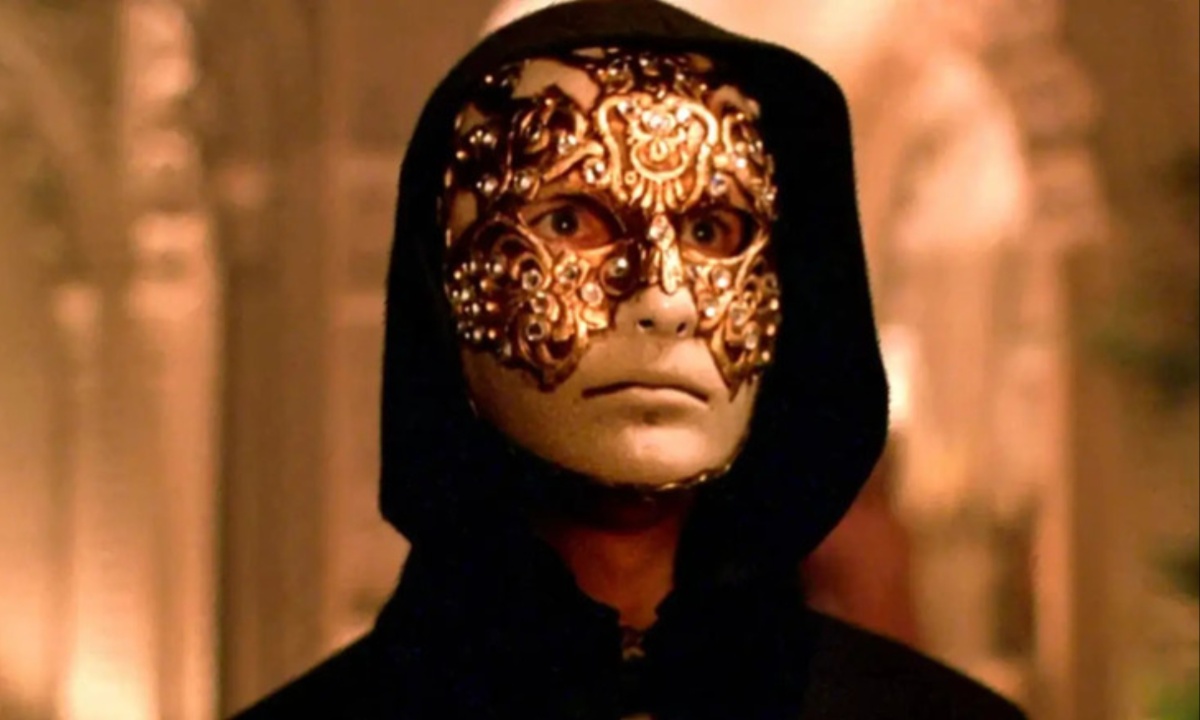Eyes Wide Shut, directed by Stanley Kubrick and released in 1999, is a thought-provoking exploration of relationships, desire, and human vulnerability. Starring Tom Cruise and Nicole Kidman as Bill and Alice Harford, the film portrays a married couple whose lives are disrupted by confessions of unfulfilled fantasies.
When Alice reveals she once considered infidelity, Bill embarks on a surreal, nocturnal journey that leads him into the shadowy world of a secret society. Kubrick’s final work blends mystery, drama, and suspense, ending ambiguously and inviting audiences to reflect on its layered meanings.
Eyes Wide Shut is a distinctive fusion of drama, romance, and psychological thriller. Its tone shifts between the surreal and the visceral, crafting an atmosphere that is both unsettling and mesmerizing. The film’s deliberate pacing, haunting visuals, and evocative score amplify the sense of unease, pulling viewers deeper into its enigmatic world. Kubrick’s unwavering attention to detail and masterful orchestration of every element creates a cinematic experience that is profoundly immersive.

The Story: A Journey of Disillusionment
The narrative begins with a marital confrontation when Alice admits she once fantasized about another man, shaking Bill’s confidence. Struggling with jealousy and his wounded pride, Bill ventures into the night, encountering temptation and danger at every turn.
His odyssey brings him to a secret society’s masked ritual, where he is exposed as an intruder and warned of severe consequences. After narrowly escaping, Bill becomes consumed by paranoia, uncovering a series of unsettling coincidences tied to the secretive gathering. Ultimately, he returns home to Alice, confessing his experiences and pledging to repair their relationship.
One of the film’s most unsettling sequences takes place at Milich’s costume shop, where Bill rents his disguise for the secret ritual. During Bill’s visit, Milich discovers his underage daughter engaging in sexual acts with two older men.
While initially outraged, Milich later appears indifferent and even offers his daughter to Bill. This sudden shift reveals the underlying corruption in Milich’s character and reflects the broader themes of moral decay and exploitation. The scenes at the shop contribute to the film’s unsettling tone, blurring the lines between propriety and depravity.
Mandy, a young woman introduced early in the film, serves as a key figure in Bill’s journey. Initially saved by Bill during a drug overdose at Ziegler’s party, she later reappears at the secret society’s ritual.
Disguised behind a mask, Mandy sacrifices herself to protect Bill when he is exposed as an outsider. Her subsequent death, officially attributed to an overdose, raises suspicions of foul play. The circumstances of Mandy’s demise hint at the darker, more dangerous realities of the secret society and its rituals, leaving viewers to ponder the true cost of her intervention.
The leader of the secret society, known only as the Red Cloak, remains shrouded in mystery. His commanding presence and role in the ritual suggest he wields significant power, but his identity is never revealed. Speculation abounds, with some theorizing that Ziegler, a manipulative and enigmatic character, might be the man behind the mask.
Ziegler’s dismissive explanations and veiled warnings add to the intrigue, further complicating Bill’s understanding of what he witnessed. By leaving the Red Cloak’s identity unresolved, Kubrick emphasizes the film’s themes of secrecy and the masks people wear in every aspect of their lives.

Exploring Marriage and Masculinity
At its core, Eyes Wide Shut examines the dynamics of marriage and the fragility of masculinity. Bill’s obsessive need to reclaim his sense of control and self-worth drives much of the story. Alice’s candid revelations about her fantasies challenge traditional gender roles and highlight the uneven power dynamics in their relationship. Their contrasting perspectives on desire and fidelity create tension, forcing both characters to confront uncomfortable truths about themselves and their marriage.
The use of masks throughout the film serves as a powerful metaphor for the facades individuals maintain in relationships and society. The secret society’s ritual, with its participants hiding behind elaborate disguises, mirrors the hidden desires and unspoken fears that underpin Bill and Alice’s relationship. Kubrick suggests that even the most intimate connections are often shrouded in secrecy.
The moment Bill finds the mask he wore during the ritual placed on Alice’s pillow marks a turning point in the film. This discovery symbolizes the intersection of his hidden actions and their shared life, forcing him to confront the consequences of his choices. By confessing his experiences to Alice, Bill takes a step toward honesty and reconciliation. The scene underscores the importance of vulnerability and openness in rebuilding their fractured relationship.
Eyes Wide Shut is a film that resists straightforward interpretation, offering a rich exploration of desire, power, and identity. Its ambiguous conclusion and intricate narrative invite continuous analysis, solidifying its enduring influence on both audiences and critics. Kubrick’s meticulous direction, paired with the evocative performances of Cruise and Kidman, creates a haunting atmosphere that resonates long after the film ends.
In the final moments, Alice’s suggestion that they “do something important” to repair their relationship reflects the central theme: striving for unity and understanding in a world rife with hidden truths and complexities. Eyes Wide Shut stands as a powerful demonstration of Kubrick’s skill in challenging norms and inspiring profound contemplation, earning its place as a landmark in cinematic history.



